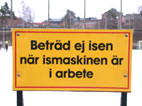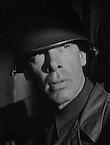george1972
Posts: 366
Joined: 6/19/2008
From: The Netherlands
Status: offline

|
First of all I would like to thank Seille for this great game. Although I lost the war, at least the scenario gave me a "pat on the back" for "holding out so long" 
Grymme's analysis of the game's major turning points are spot-on, so my version of the story will sound pretty similar. In essence, I think a properly handled Wehrmacht can win this scenario, although it isn't easy to do and it will take a certain amount of luck to pull it off.
As the Germans I was constantly aware of the huge production deficit in the game. I also have great respect for Seille as a player since he knows this game inside out. This made me a little too careful during the opening phase of the campaign. During the first battle of Smolensk in 1941 I didn't have a clue that he was pouring everything into that battle and the other fronts were hardly covered, especially the Ukraine.
I think I had a real possibility to win that battle if I had persevered, diverted troops from AG North sooner or even sent AG South towards Moscow after the fall of Kiev. But the mounting losses on my side scared me into a defensive posture too soon. And after the winter air attack I completely lost confidence in my chances for a complete victory.
Sevastopol also was a clear mistake on my side. Although it didn't contribute too much to the Russian war machine, it nevertheless produced for them for 50 turns, where I could probably have taken it after 10 turns. 200,000 production points thus went to the Russians when in my hands they could have made the difference during the later stages of the campaign.
The winter of '41-'42 I think I handled pretty well, opting to pull back to avoid losses costing me a lot of territory, but ultimately giving me a strong and experienced army. The only regrettable accident was the near-loss of the Romanian Army Group during the last winter turn, which cost me a lot of troops and not to forget a lot of time to correct, which prevented me from having better starting positions during the subsequent Summer Offensive. Although seemingly a small incident, had I prevented this from happening, I might have gotten into the Caucasus much sooner than I did in the end.
The Leningrad offensive which culminated in the capture of the city was a nice "side-show" but essentially a waste of resources. The city itself didn't produce enough to make a real difference and the terrain beyond the city made any further advances of mechanized forces against an abundance of infantry a futile proposition. Although I managed to destroy a lot of Soviet troops and equipment in those battles, strategically I think it was a mistake.
The key to winning as the Germans in this game is capturing and securing a major production center BEFORE 1943. As Seille already commented during the game, had I captured Baku a few turns earlier, the outcome of the war may well have been very different. I realized too late the possibilities in the South-East and became embroiled in bitter fighting for Maikop and the approaches to Baku which took precious time and a lot of casualties. It also allowed Seille to exploit his growing numbers near Leningrad and recapture the city, knocking the Finns out of the war and pushing AG North back all the way to Riga.
When 1943 arrived, I still had a smaller army and less production then Seille, the only thing he had to do know was to keep losses to a minimum and let his production give him an overwhelming superiority on the ground and the game was over. Lucky for me and you, the reader, he wasted his surplus production in futile attempts to fight the Romanians to a halt in the steppe between Don and Volga. After he overran my airfield in the Don Bend I knew the game was over. Despite this, I managed to trick him once more in believing he was vulnerable by inflicting the greatest casualties since the start of the campaign.
But after his "retreat" in the steppe, things started to finally work out for his Russians and the rest is essentially history.
My handling of the air war was without a doubt in my mind THE biggest mistake in the game. After the first setback I never again tried to take on the Red Air Force, since I expected Seille to have embarked on a fighter production spree just as ambitious as mine. I was very surprised when making the force overviews that I outnumbered his air force in fighters in mid-1943.
It's too bad I was too lazy to make my own "force overviews" during the battle with available intelligence information. It is just too tedious to do, but perhaps I would have noticed the lack of growing Soviet fighter strength in '42 and the reason for it being the abundance of infantry produced on his side.
As for Seille's tactics employed during the game, I must say they were very effective. His primary unit was simple infantry but lots of them. He also didn't create any "super-units" just many and many "average" units. Losing one of them was never a problem, where every time I lost a high-valued unit to his concentric "150 infantry and 2 tanks" counter-attacks I threw up my hands in despair and went "It's not fair! This isn't how it happened in the real war!". His tactics prevented me from executing anything like the historical "kessel-schlachten" simply because even a strong unit will still be thrown back when attacked by masses of infantry from 2 opposite sides.
The battle of Smolensk in the late summer of '41 taught me these kind of tactics don't work here. You just need to butcher your way through endless lines of troops and hope they don't have enough readiness left to hit you back, because if they do, your "spearhead" will be dead.
Due to this my overall tactic in the game changed to Nimitz' tactic of "hit'em where they ain't". Every time I got stuck somewhere, I dug in and started pushing someplace else. I hardly ever decisively defeated any major Russian concentration that way, but Seille was forced to fight me with new recruits without proper support and they suffered terrible losses in consequence.
In the fighting towards Stalingrad and the Caucasus in '42 en '43 I took tremendous risks by leaving a practically open flank in the Ukraine. If Seille had sent off a few good units from his Smolensk Front supported by his big air group towards Gomel and Kiev, I would never have come close to Baku. Fortunately, I had gotten a good impression of his overall playing style even during the previous games I lost big-time to him. As he said himself, he doesn't "gamble" and attacking towards the Germans so soon after they beat him back beyond Kursk looked like one. Of course this didn't keep him fooled for long, but long enough to keep the initiative in the South a little longer and take Baku.
All in all, Seille's the toughest player I've met playing AT and although "officially" I won (thanks to Tom for putting in that outcome after 60 turns) I still don't have the idea I've ever beaten him.
|
 Printable Version
Printable Version
 . Some little guards (10-20 rifle) could have safed them.
. Some little guards (10-20 rifle) could have safed them. 











 ), i am going to begin a Russia 41 game but with some HR: the reason is that this scenario is not modifiable
), i am going to begin a Russia 41 game but with some HR: the reason is that this scenario is not modifiable 


 New Messages
New Messages No New Messages
No New Messages Hot Topic w/ New Messages
Hot Topic w/ New Messages Hot Topic w/o New Messages
Hot Topic w/o New Messages Locked w/ New Messages
Locked w/ New Messages Locked w/o New Messages
Locked w/o New Messages Post New Thread
Post New Thread